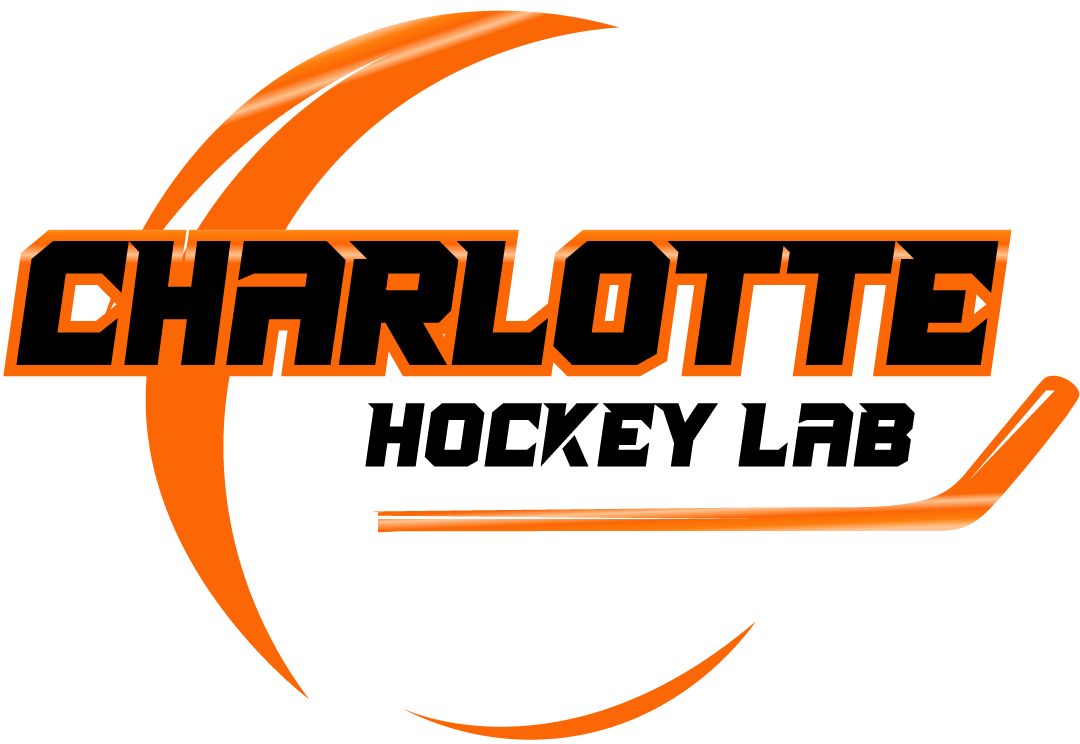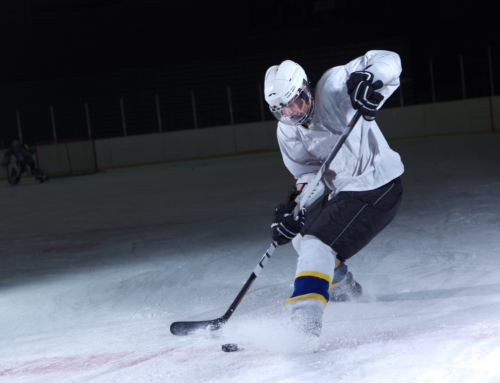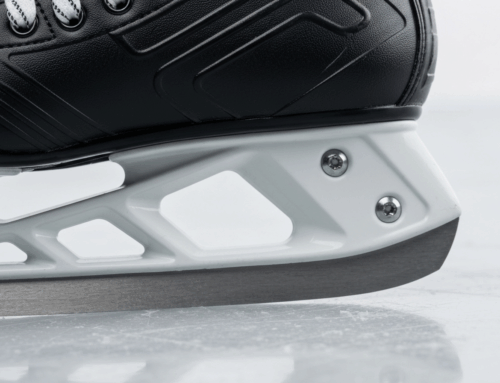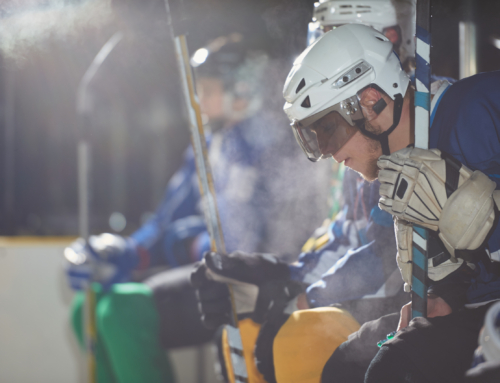How to Start Implementing modern strategic hockey training
Why Modern Strategic Hockey Training Matters Today
The game of hockey is constantly evolving. What was considered cutting-edge strategy just a few years ago might now be commonplace or even outdated. This rapid evolution means that coaches and players alike must commit to continuous learning and adaptation. Implementing modern strategic hockey training is no longer optional; it’s a necessity for staying competitive and fostering true player development. Focusing solely on individual skills without understanding how they fit into team systems and strategic play limits a player’s potential and a team’s effectiveness.
Today’s hockey emphasizes speed, transition, puck possession, and smart decision-making under pressure. Coaches need to move beyond traditional drills and integrate strategic thinking into every practice. This involves teaching players not just how to execute a skill, but when and why within the context of team strategy. From defensive zone exits to offensive zone entries, every aspect of the game is analyzed and optimized. The evolution of modern strategic hockey player development reflects this shift, acknowledging that technical skill must be paired with tactical intelligence.
Furthermore, players are entering the sport with a greater baseline understanding of the game due to increased media coverage, analytics, and specialized training environments. This necessitates that coaches elevate their own understanding and training methods. Implementing modern strategic hockey training ensures that practices are efficient, relevant, and challenging, preparing players for the demands of high-level competition. It’s about building complete players who can think the game, not just play it.
Decoding the Elements of Advanced Hockey Strategy
Advanced hockey strategy encompasses much more than just drawing plays on a whiteboard. It’s a complex interplay of individual roles, team systems, in-game adjustments, and exploiting opponent weaknesses. At its core, it involves understanding and mastering concepts like puck possession in all three zones, effective transition play, specialized roles on power play and penalty kill, and leveraging analytics to inform decisions.
Consider the defensive zone. Modern strategy isn’t just about collapsing and blocking shots, although that’s important. It’s about coordinated pressure, smart stick usage, effective communication, and executing powerful defensive zone exits to quickly transition to offense. Drills for developing powerful defensive zone exits are crucial components of this strategy. Similarly, in the offensive zone, it’s not just about shooting; it’s about puck cycling, finding open ice, creating traffic, and understanding positioning to maximize scoring chances and maintain possession, concepts explored in boosting offense through strategic puck possession in the offensive zone.
Special teams are another critical strategic area. Power plays require intricate coordination, anticipating opponent movements, and creating specific scoring opportunities. Penalty kills demand relentless pressure at the right times, disciplined lane coverage, and aggressive puck retrieval. Understanding forechecking systems – whether aggressive like the 2-1-2 or more conservative like the 1-2-2 trap – is vital for applying pressure and dictating play in the offensive and neutral zones.
Deciphering advanced strategy involves analyzing micro-situations within the game. This includes faceoff techniques and strategies, knowing when to carry the puck versus dumping it on zone entries, and mastering the art of the one-timer or saucer pass. Effective strategy relies on players being able to read the play, anticipate outcomes, and make quick, intelligent decisions. Implementing modern strategic hockey training focuses on building this cognitive aspect of the game alongside physical skills.
Learning from the Best How to Build Your Strategy
One of the most effective ways to build and refine your coaching strategy is by learning from those who have achieved success at various levels of the game. The top coaches in hockey constantly share insights into their philosophies, practice designs, and tactical approaches. Accessing this knowledge provides invaluable perspectives on everything from player development methodologies to complex team systems.
Learning from the best often involves dissecting game film, attending clinics (both in-person and online), and engaging with a community of fellow coaches. Many successful coaches emphasize the importance of building a clear, concise team identity and strategy that aligns with their players’ strengths. They prioritize teaching players why certain systems or plays are effective, fostering a deeper understanding rather than simply memorizing movements.
Top development programs often integrate a strategic focus early on, teaching foundational concepts that players can build upon as they advance. They demonstrate how individual skills, such as essential hockey defensemen gap control and angling techniques, are integral parts of the overall team strategy. They also highlight the importance of off-ice preparation, including mental conditioning and fitness, as key components that support strategic execution on the ice.
Platforms and resources that gather expertise from a wide range of experienced coaches offer a unique opportunity to explore different tactical approaches and adapt them to your own team’s needs. This exposure to diverse perspectives on strategy, practice planning, and player management is crucial for any coach looking to enhance their capabilities and effectively implement modern strategic hockey training.
Essential Areas to Focus On in Strategic Training
When implementing modern strategic hockey training, it’s vital to identify the key areas that will have the biggest impact on team performance. While individual skills are the building blocks, it’s how those skills are applied within a strategic framework that determines success. Focusing on integrating individual technique with team tactics is paramount.
Key areas for strategic training include:
- Puck Management: This goes beyond simple stickhandling. It involves understanding when to possess the puck, when to pass, when to shoot, and when to chip or dump. Strategic puck management aims to control the flow of the game and minimize turnovers in dangerous areas.
- Transition Play: The speed and effectiveness of moving from defense to offense (and vice versa) are critical in modern hockey. Training should focus on quick puck retrieval, communication, supporting the puck carrier, and creating immediate offensive threats or shutting down opponent rushes.
- Situational Awareness: Teaching players to recognize game situations (e.g., odd-man rushes, defensive zone pressure, power play entries) and react appropriately based on predetermined strategies. This requires developing players’ hockey sense and decision-making abilities.
- Special Teams Execution: Dedicating significant practice time to power play formations and entries, penalty kill pressure schemes, and faceoff plays in critical zones. These situations often decide the outcome of games.
- Position-Specific Responsibilities within Systems: While players need to understand the overall team strategy, they must also master their specific roles within different systems (forecheck, neutral zone trap, defensive zone coverage). For example, defensemen need to understand their gap control and angling responsibilities within the team’s defensive structure, as highlighted in essential hockey defensemen gap control and angling techniques.
- Game Flow Recognition: Helping players understand momentum shifts, when to push for offense, when to play conservatively, and how to respond to opponent strategies.
Integrating these strategic elements into practice requires thoughtful drill design and clear communication. Drills should simulate game situations as closely as possible, forcing players to make strategic decisions under pressure. This layered approach, combining technical skill with tactical understanding, is fundamental to effectively implementing modern strategic hockey training.
Practical Steps for Implementing Modern Strategic Hockey Training
Putting modern strategic hockey training into practice requires a structured approach. It’s not enough to simply talk about strategy; you must integrate it into daily activities and evaluate its effectiveness. Here are some practical steps coaches can take:
- Assess Your Team’s Strengths and Weaknesses: Before implementing any new strategy, understand your personnel. What systems will best utilize your players’ skills? What areas need the most improvement?
- Define Your Team Identity and Core Strategies: What kind of team do you want to be? Fast and aggressive? Defensive and counter-attacking? Establish 2-3 core strategies (e.g., forecheck, defensive zone coverage) that define your identity.
- Break Down Strategies into Teachable Components: Complex systems can be overwhelming. Divide them into smaller, manageable parts. Teach specific movements, reads, and responsibilities within each system.
- Design Drills that Simulate Game Situations: Move away from purely technical drills. Create small-area games and flow drills that require players to apply skills within strategic contexts. Incorporate elements like transition, puck pressure, and decision-making. Drills for developing powerful defensive zone exits or boosting offense through strategic puck possession in the offensive zone are examples of strategically focused practices.
- Use Video Analysis: Film practices and games. Reviewing footage with players is invaluable for demonstrating strategic concepts, highlighting successful execution, and identifying areas for improvement. This is a cornerstone of effective implementing modern strategic hockey training.
- Emphasize Communication: Encourage players to communicate on the ice, calling for passes, identifying open players, and communicating defensive assignments.
- Provide Clear, Concise Feedback: During drills and video sessions, provide specific feedback related to strategic execution. Help players understand the why behind your instructions.
- Progress Gradually: Introduce new strategies and systems gradually. Master the basics before adding layers of complexity.
Consistency is key. Reinforce strategic concepts in every practice and pre-game talk. Help players understand how their individual actions contribute to the team’s overall success within the strategic framework.
Leveraging Technology and Resources for Effective Training
In the modern era, technology and readily available resources play a crucial role in effective hockey training and implementing modern strategic hockey training. Coaches have more tools at their disposal than ever before to analyze the game, plan practices, and educate players.
Some key ways to leverage technology and resources include:
- Video Analysis Software: Tools that allow coaches to tag, clip, and analyze game and practice footage are invaluable. They facilitate detailed breakdowns of systems, individual player performance, and opponent tendencies. Sharing clips with players helps them visualize strategic concepts and their execution.
- Practice Planning Software/Apps: Digital platforms can help coaches design, organize, and share practice plans more efficiently. They often include libraries of drills and allow for easy modification and distribution to coaching staff and players.
- Sports Science and Analytics Tools: Data from wearable technology (if applicable to your level) or public sources can provide insights into player workload, skating efficiency, and game events. While advanced analytics might be more common at higher levels, understanding basic statistics related to shot attempts, zone entries/exits, and faceoffs can still inform strategic decisions.
- Online Coaching Resources and Communities: Websites and platforms dedicated to hockey coaching offer access to vast libraries of drills, articles, videos, and forums. These resources provide exposure to different coaching philosophies and strategic ideas from around the world. Connecting with a global community allows coaches to exchange best practices and troubleshoot challenges.
- Digital Lockers/Content Management: Tools that allow coaches to store, organize, and share their own drills, videos, and strategic presentations create a centralized hub for team learning. This allows players to access resources and review concepts off the ice.
Utilizing these tools effectively can significantly enhance the quality and impact of your strategic training sessions. They provide objective data, facilitate visual learning, and streamline the planning process, ultimately helping coaches and players gain a deeper understanding of the game and improve performance.
Collaborating with Other Coaches to Enhance Your Approach
Hockey coaching, particularly implementing modern strategic hockey training, doesn’t have to be a solitary endeavor. Collaborating with other coaches, whether within your own organization or externally, is a powerful way to enhance your knowledge, refine your strategies, and gain new perspectives.
Within your organization, effective collaboration among coaching staff ensures consistency in messaging and strategy across different age groups or teams. Junior coaches can benefit from the insights of senior coaches, creating a unified development pathway for players. Regular meetings to discuss strategy, practice plans, and player progress are essential.
Reaching out to coaches from other teams or organizations can also be incredibly beneficial. This can involve:
- Attending coaching clinics and workshops where coaches share their expertise.
- Networking with coaches at tournaments or showcases.
- Joining online coaching communities and forums to discuss ideas and ask questions.
- Arranging visits to observe practices of other successful teams (with permission, of course).
- Discussing specific strategic challenges or areas of the game with peers. For instance, debating different approaches to forechecking or penalty killing based on shared experiences.
Collaboration fosters a culture of continuous learning. Different coaches bring diverse experiences, playing backgrounds, and coaching philosophies. By openly discussing strategies, analyzing game situations together, and sharing successful drill designs, coaches can identify blind spots in their own approach, discover innovative ideas, and refine their understanding of the nuances of modern hockey strategy. This collective intelligence is invaluable for anyone serious about effectively implementing modern strategic hockey training.
For instance, discussing boosting offense through strategic puck possession in the offensive zone with several coaches might reveal multiple valid approaches depending on player skill sets and opponent tendencies. This collaborative learning enhances a coach’s adaptability and problem-solving skills.
Measuring Success and Continuously Improving Your Training Strategy
Implementing modern strategic hockey training is an ongoing process, not a one-time change. To ensure your efforts are effective, it’s crucial to measure success and establish a system for continuous improvement. Success isn’t solely measured by wins and losses, but also by observable improvements in strategic execution and player understanding.
Ways to measure success in strategic training include:
- Statistical Analysis: Track relevant statistics that reflect your strategic focus. This could include offensive zone possession time, successful defensive zone exit percentages, special teams conversion rates, faceoff win percentages in key areas, or controlled zone entry rates.
- Video Review: Regularly review game film specifically looking for execution of strategic concepts. Are players positioning themselves correctly in the defensive zone? Are transitions happening quickly and efficiently? Are forechecking assignments being fulfilled?
- Player Feedback: Talk to your players. Do they understand the strategies? Do they feel the training is helping them execute? Their perspective is valuable for identifying areas of confusion or difficulty.
- Observation in Practice: Observe drills designed to reinforce strategy. Are players making the right reads and decisions? Is the execution crisp?
- Opponent Analysis: How effective are your strategies against different types of opponents? Are you able to adapt your approach based on what the other team is doing?
Based on your measurements, be prepared to adapt and refine your training strategy. If defensive zone exits are consistently poor, revisit those drills and concepts. If the power play isn’t generating chances, analyze the formation and entry methods. Continuous improvement involves a cycle of planning, implementation, measurement, and adjustment.
This iterative process ensures that your implementing modern strategic hockey training remains relevant and effective in the face of an ever-changing game. It reinforces the idea that coaching is a journey of constant learning and refinement, always seeking ways to give your players the best possible chance to succeed.
It’s also beneficial to review the overall evolution of player development, considering how strategic elements have become more prominent over time. The evolution of modern strategic hockey player development underscores the need for coaches to stay current and proactive in their approach to training and strategy implementation.
Have questions? Contact us here.

We use only the finest ingredients to produce stellar tastes.












